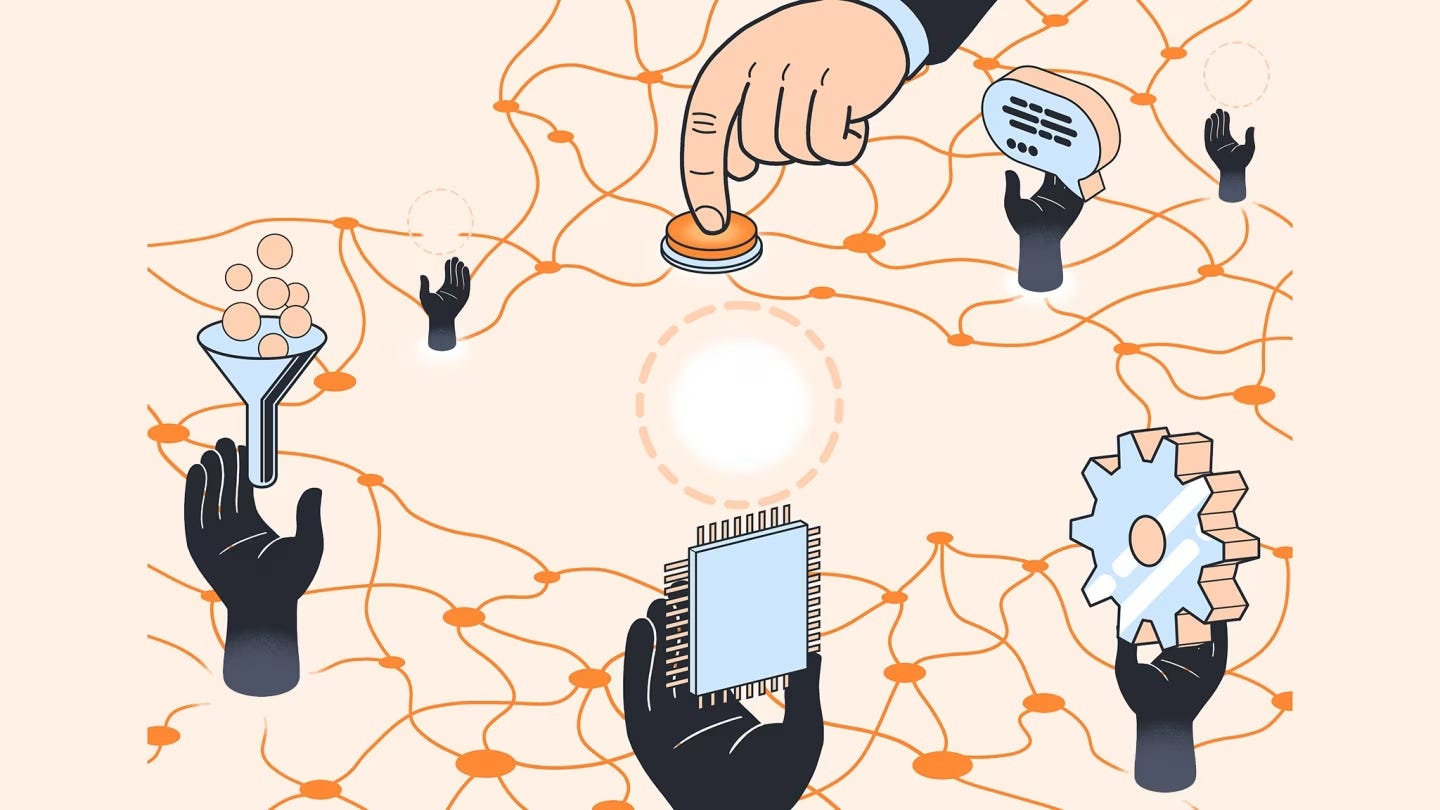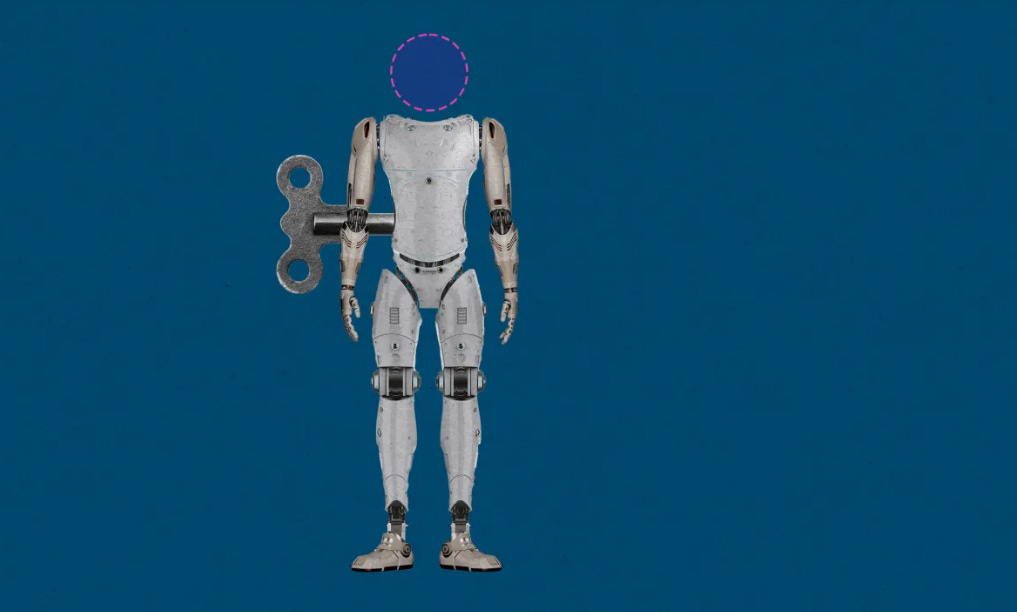Dive in — The people refusing to use AI |> Inside Waymo - building a robotaxi future |> Visa wants to give AI agents your credit card |> Why the humanoid workforce is running late and more
Expand your understanding of artificial intelligence daily, with a curated, daily stream of significant breakthroughs, compelling insights, and emerging AI trends that will shape tomorrow.
The people refusing to use AI
"What's the point of sending something we didn't write, reading a newspaper written by bots, listening to a song created by AI, or me making a bit more money by sacking my administrator who has four kids?
"Where's the joy, love or aspirational betterment even just for me as a founder in that? It means nothing to me," she says.
Read more | BBC
Inside the Waymo factory - building a robotaxi future
"Every day, it churns out several battery-powered, white Jaguar I-PACE electric SUVs loaded up with the company’s custom-designed computer, cameras, radar and laser lidar sensors on a single production line.
Inside the cavernous space, there are no conveyor belts or loud metal stamping you’d see at traditional assembly plants. The work pace is steady but not high volume.
Raw cars roll into the building at one end, with plastic covers on the body panels over precut sections where sensors will be installed. They enter a manual assembly line where dozens of workers remove those covers, bumpers and other exterior components to begin the process of carefully installing an electrical wire harness, computers, sensors on each corner of the vehicle and Waymo’s telltale “top hat” unit–housing the main laser lidar for 3D vision, multiple cameras and audio sensors.
Read more | FORBES
Everyone is cheating their way through college
“Roy” Lee stepped onto Columbia University’s campus this past fall and, by his own admission, proceeded to use generative artificial intelligence to cheat on nearly every assignment.
As a computer-science major, he depended on AI for his introductory programming classes: “I’d just dump the prompt into ChatGPT and hand in whatever it spat out.” By his rough math, AI wrote 80 percent of every essay he turned in. “At the end, I’d put on the finishing touches. I’d just insert 20 percent of my humanity, my voice, into it,” Lee told me recently.
Read more | NY MAG
Visa wants to give artificial intelligence ‘agents’ your credit card
Set a budget and some preferences and these AI agents — successors to ChatGPT and its chatbot peers — could find and buy you a sweater, weekly groceries or an airplane ticket.
“We think this could be really important,” said Jack Forestell, Visa’s chief product and strategy officer, in an interview. “Transformational, on the order of magnitude of the advent of e-commerce itself.”
Read more | AP
AI agents: from co-pilot to autopilot
This is the real revolution in agentic AI, Cassie Kozyrkov says. “Before, you had to go and get yourself schooled in the arcane arts of some new language and now you don’t — you speak your mother tongue and it works.”
While this presents an opportunity, she cautions that it is also one of the greatest risks in deploying AI in an enterprise. “Unfortunately the mother tongue is vague and not everybody knows when they’re being ambiguous. Now you can program a machine without thinking it through, so it’s hardly a surprise that you get unintended consequences.”
Read more | FT
Why the humanoid workforce is running late
Roboticists, from what I’ve seen, are normally a patient bunch. The first Roomba launched more than a decade after its conception, and it took more than 50 years to go from the first robotic arm ever to the millionth in production. Venture capitalists, on the other hand, are not known for such patience.
Perhaps that’s why Bank of America’s new prediction of widespread humanoid adoption was met with enthusiasm by investors but enormous skepticism by roboticists. Aaron Prather, a director at the robotics standards organization ASTM, said that the projections were “wildly off-base.”
As we’ve covered before, humanoid hype is a cycle: One slick video raises the expectations of investors, which then incentivizes competitors to make even slicker videos. This makes it quite hard for anyone—a tech journalist, say—to peel back the curtain and find out how much impact humanoids are poised to have on the workforce. But I’ll do my darndest.
Read more | MIT TECHNOLOGY REVIEW
Facebook allegedly detected when teen girls deleted selfies so it could serve them beauty ads
Targeted ads on social media are made possible by analyzing four key metrics: your personal info, like gender and age; your interests, like the music you listen to or the comedians you follow; your "off app" behavior, like what websites you browse after watching a YouTube video; and your "psychographics," meaning general trends glossed from your behavior over time, like your social values and lifestyle habits.
The evolution of these metrics is important to understanding the all-consuming nature of surveillance capitalism — even a scathing rant about surveillance capitalism becomes fodder for the machine, as you can clearly see with the ads on this page. When deep-pocketed advertisers are involved, positive and negative traits alike become dollar signs; search terms to be probed, analyzed, and used for profit.
Read more | FUTURISM
The rise and fall of the stock market’s music king
Mercuriadis liked to say that in the streaming age, when more people were paying more for music than ever, an investment in songs was as safe as one in oil or gold, especially the hits Hipgnosis was stockpiling.
There will never be another Eurythmics’ Sweet Dreams (Are Made of This), Chic’s Good Times or Journey’s Don’t Stop Believin’, all of which he boasted were among the 65,413 songs Hipgnosis would acquire for $2.2 billion. This trove, he pitched, would only become more valuable.
As Mercuriadis noted on a podcast in 2021, there were roughly 30 million streaming subscribers when Hipgnosis made its debut in 2018. Now, he estimated, there were 450 million. What would Hipgnosis be worth when the number reached 2 billion, which Mercuriadis predicted would happen within the next decade?
Read more | BLOOMBERG
Designers are excited about AI, but most don’t know what to do with it
Artificial intelligence. It’s pretty cool, I guess? Look at those neat videos. And the thousands of product design iterations just to get those creative balls rolling. Sure. Awesome. Or is it? Maybe. Who knows. All that seems to be the summary of Figma’s 2025 AI Report, based on a survey of 2,500 designers and developers.
While tools like ChatGPT and Figma’s AI features are embedded in daily workflows, the report reveals a stark disconnect. Enthusiasm for AI’s potential is high, but its practical impact remains uneven, the numbers show, constrained by vague goals, quality concerns, and cooling expectations. The report underscores a paradox: professionals see AI as essential to their future, but struggle to meaningfully harness it today.
Read more | FAST COMPANY
Google launches AI Max for search campaigns
AI Max for Search is a new campaign setting launching in Search campaigns that expands keyword matching, improves creative, and enhances controls and reporting.
Brands can keep control with brand safety guardrails, geo-intent targeting, asset removals, and expanded reporting.
Read more | SEARCH ENGINE JOURNAL
Unmissable AI
Your daily dose of curated AI breakthroughs, insights, and emerging trends. Subscribe for FREE to receive new posts, thanks!











